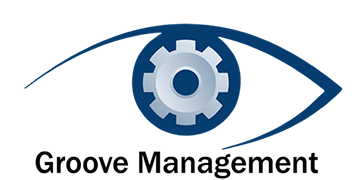GENERATIONAL DIVERSITY: TALKIN' BOUT MY GENERATION
Fifteen years ago I wrote an article titled “Why I wish I had some grey”. The piece was in reaction to the fact that I had been passed over for a job. I strongly believed that I was the best person for the job, but was told I needed more experience. In hindsight that might have been true, but as I sit here on my forty-fifth birthday I face a new set of age related challenges. Yes I am “middle-aged”. While fortunately I still don’t have too much grey and I am physically in the best shape of my life I have a very different perspective on life and work than I did when I was thirty.
"Experience builds wisdom and while it is possible to be wise beyond one’s years, there is no substitute for experience."
Diversity and discrimination are front page news around the world today especially with the immigration issues in Europe and the racial profiling that is dividing the world. I have always seen diversity as a strength. The United States was built on the promise of recognizing everyone as equals, yet that founding principle is challenged daily. Corporations still struggle to hire employees that mirror their customers and the general public. As an organizational development practitioner, I have studied the role of diversity in the workplace and find one type of diversity the most fascinating. That is generational diversity in the workplace.
"Unlike race, gender, ethnicity and other classifications, age is the only diversity classification that we will all experience being both in the majority and the minority at different stages in our lives."
Unlike race, gender, ethnicity and other classifications, age is the only diversity classification that we will all experience being both in the majority and the minority at different stages in our lives. What is clear is that the way that different generations approach work is quite different. My parents and other baby boomers were of a generation where loyalty to an organization were of high importance. Baby boomers sought to find a company where they could build a career. Thirty plus years at a single company with a pension plan, service awards and other recognition for loyalty were motivators. Then something changed. I believe that during the 1980’s CEOs made it clear through their layoffs and cost cutting initiatives that organizations were no longer going to be loyal to their employees. That shifted the behavior of the next generation of employees. Their focus turned to personal interest rather than loyalty to an organization. That trend has continued. Today millenials and the next generation of workers are expected to hold ten plus different jobs in multiple organizations throughout their career.
"I believe that organizations that view their generationally diverse workforce as a strength are best positioned to outperform their competitors."
We have more generations in the workforce than ever before and that is creating new pressures on organizations. How do you treat a generationally diverse workforce fairly and equally when the needs of people at various stages of their careers are so different? There is no simple answer, but I believe that organizations that view their generationally diverse workforce as a strength are best positioned to outperform their competitors. The key is to recognize the specific strengths that workers of various ages and experience levels bring to an organization. Below are three suggestions to leverage generational diversity as a strength in your organization.
1) Recruit and hire employees that represent multiple generations. Sourcing jobs purely on social media will attract only a certain age demographic. Cast a wider net to attract older and more experienced workers. Be very clear on the skills and competencies that are required for your openings. The best candidate might not fit the mold of what most of your workforce currently looks like.
2) Create generationally diverse work teams. Create mentor programs and peer mentoring opportunities by matching recent college grads with more seasoned employees. Impress upon each generation that they have a lot to learn from staff from other generations.
3) Analyze your customer demographics and align your workforce to mirror your customers. Make certain that each work team has people that can clearly relate to your customers, their needs and their challenges.
One thing about age, there will always be someone older than you and someone younger than you. If you treat your career journey as a lifelong learning experience, you will come to recognize that regardless of age each person you interact with has something to teach you. To combat my own concerns with losing touch with what’s cool and in style, I try to spend time around people half my age. At the same time, I find my interactions with people my parents age to be equally enlightening.
Remember generational diversity is the most interesting form of diversity because it is not innate and the longer one lives the more one will experience being in the majority or in the minority. The key is to recognize the power that you as an individual can wield at each stage of your life.
At forty-five I don’t believe in the cliché mid life crisis. Instead I am embracing the mid life opportunity to relate just as effectively to those half my age and those twice my age. After all age is just a number.
For further reading on the topic check out 5 Questions About Generational Workforce Issues
